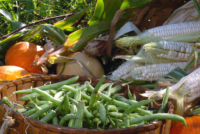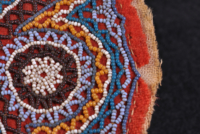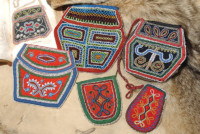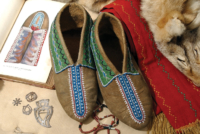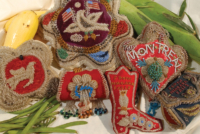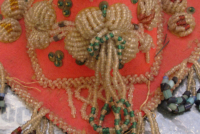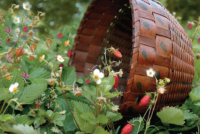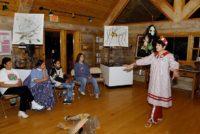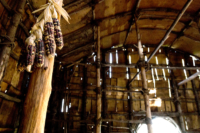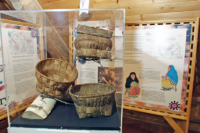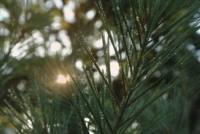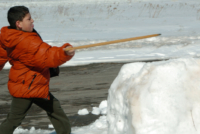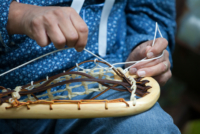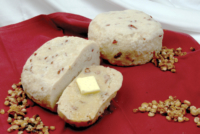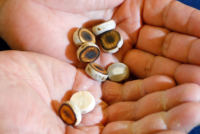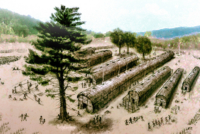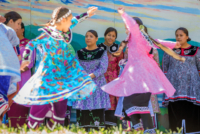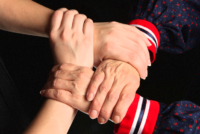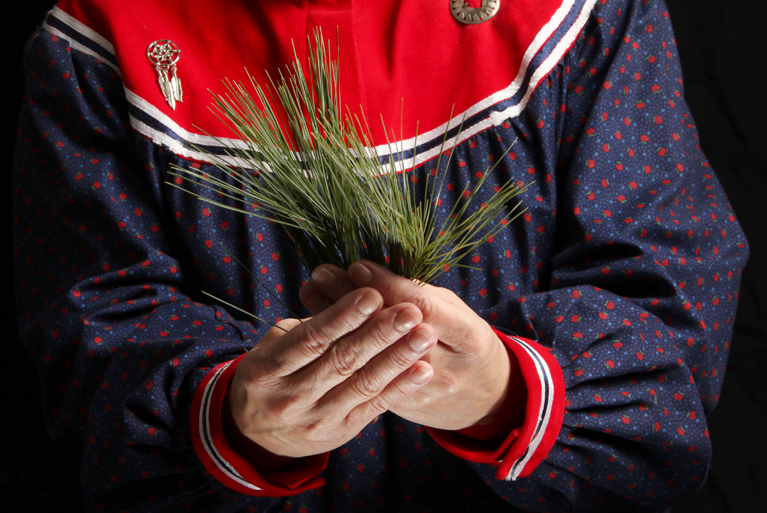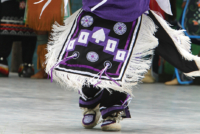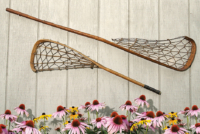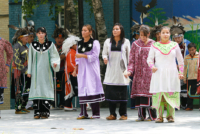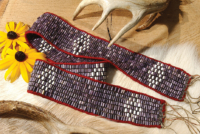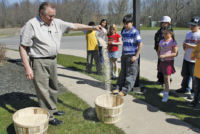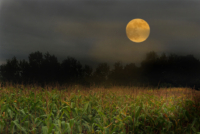BELIEFS & TRADITIONS
One of the founding members of the Haudenosaunee Confederacy, the Oneidas have many beliefs and traditions that have stood the test of time – devotion to their homelands, commitment to collaboration and respect for the gifts of the Creator.
Early Oneidas traveled hundreds of miles to deliver corn to Washington’s starving troops at Valley Forge and marked agreements and pacts with a sacred substance known as wampum. Lessons passed along from Elders were respected, Polly Cooper was documented as a hero for her service and the arrival of the strawberry was celebrated.
Today’s Oneidas work diligently to preserve these traits, traditions and overall culture of their ancestors. They recognize and honor the wisdom, legends and lore that have led to the perseverance, determination and gratitude of today’s Oneidas and will in turn influence generations to come.
The Haudenosaunee Creation Story
The Haudenosaunee have always recognized that people are complex, possessing both good and bad qualities. The Creation story serves as a reminder: no human is flawless– the Great Spirit alone is perfect.
Keller George, Wolf Clan Member of the Nation’s Council, recounts the following story his maternal great-grandmother told him about the birth of the Evil Spirit and the Good Spirit.
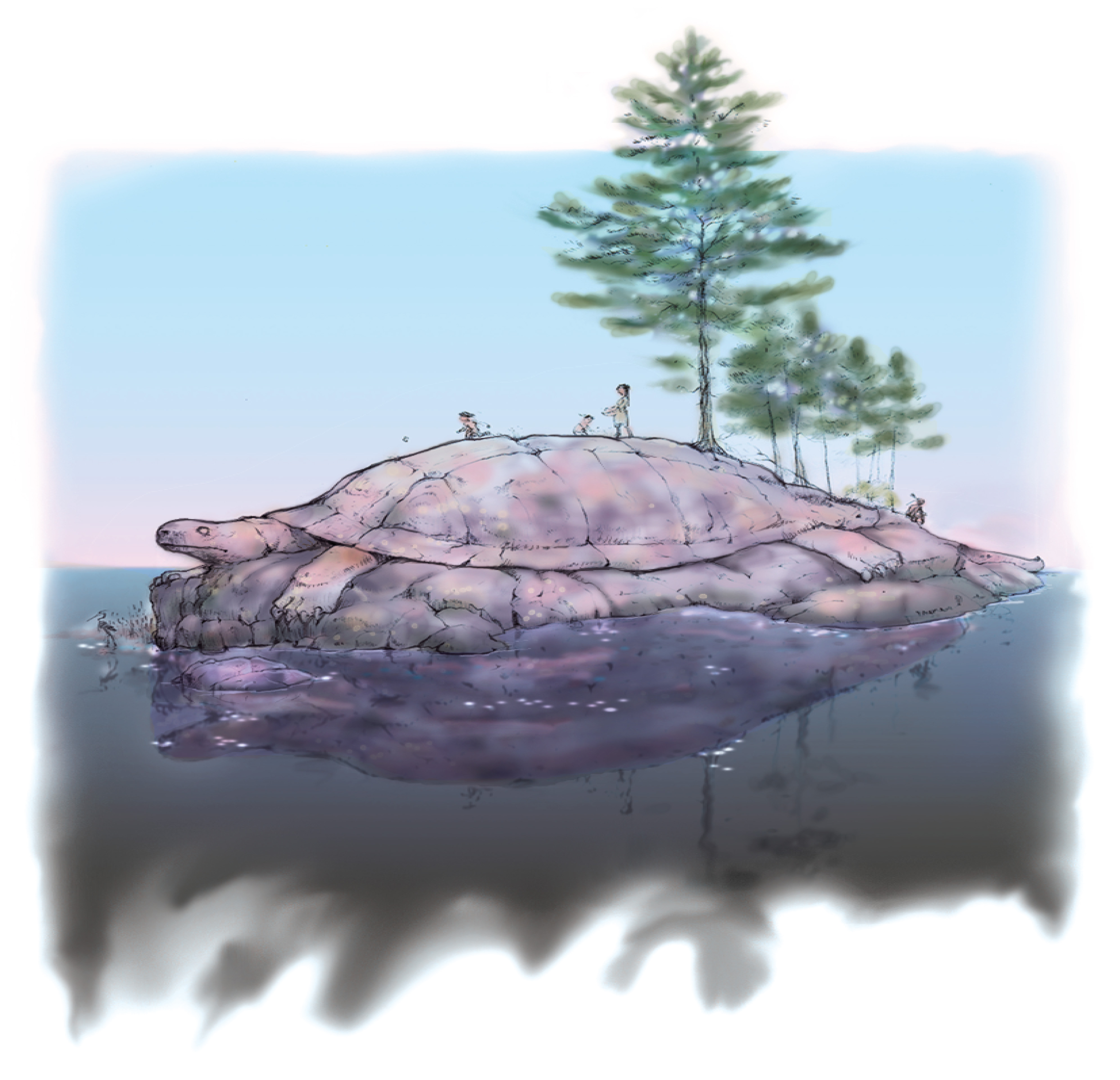
The Interworking of the Three Sisters
Corn, beans and squash are known as the Sustainers of Life because they comprised the foundation of the Oneida diet of old. Although occasionally augm [...]
The Oneida Indian Nation Seal
The Oneida Indian Nation seal symbolizes the unity of the three clans of the Nation – the Turtle, Wolf and Bear. The focal point of the seal is a whit [...]
Oneida Beadwork Collection Offers Magnificent Artistry
Safely stored in the Nation’s archives are extraordinary items of Haudenosaunee beadwork, remarkable for their intricacy and colorful design. Origina [...]
Celebration of the Strawberry
In the Haudenosaunee culture, the strawberry is considered a gift from the Creator and the first berry of the season holds a special place for the One [...]
Conservation: A Haudenosaunee View
The Haudenosaunee people have always lived in balance with nature. They know the Creator’s gifts must be tended and preserved unto the seventh generat [...]
Oral Tradition
Storytelling knits generations together. The Oneida oral tradition is filled with wonderful tales from our Elders, guaranteed to scare, interest, or a [...]
The Traditional Haudenosaunee Longhouse
Longhouses were the typical dwelling unit of the Haudenosaunee People, from Ontario through New York State. They usually housed a number of families w [...]
Artful Baskets, an Important Part of Oneida Culture, on Display at Shako:wi Cultural Center
The Oneida Indian Nation’s Shako:wi Cultural Center is home to a collection of baskets dating from the late 1800s to early 1900s in a style identified [...]
Notes from the past: The Game of Longball
From the Oneida, Vol.4, No. 4, April, 1993: When Elder Keller George (Wolf Clan) was a boy, he remembers playing longball, a Native American game enjo [...]
Snow Snake: Traditional Winter Game of the Haudenosaunee
Snow Snake is a traditional Haudenosaunee game played during the winter. Historically, the games were played when the men of the villages returned fro [...]
Fishing for Life
Traditionally, Oneida fished for sustenance primarily during the fall and the spring spawning seasons. Since rods and hooks were unknown at the time, [...]
Lacrosse Is Important to Many
By Clint Hill, Oneida Indian Nation Turtle Clan Council Member May, 2001 Lacrosse – a spiritual game played centuries ago for recreation or political [...]
Haudenosaunee Hunting and Fishing Techniques
The Haudenosaunee developed a cooperative culture, with each member of a village or clan responsible for helping others in the group. Women tended the [...]
The Art of Cornbread
This "Staff of Life" Provided Energy This hearty bread was once a staple in the diet of the Oneida People. For centuries this nutritious “staff of lif [...]
Timeless Technique of Bones
When John Webster (Wolf Clan) was a mere child of 7 years old, he distinctly remembers learning a game from his paternal grandmother, Malenda Webster [...]
The Peacemaker’s Gift of the Great Law
In a distant time, the Oneida, Mohawk, Seneca, Onondaga and Cayuga warred against each other. It was a period of great upheaval that continued until t [...]
Inspiring Women’s Rights: Haudenosaunee Life Stimulates Historical Movement
Elizabeth Cady Stanton, Matilda Joslyn Gage, and Lucretia Mott – all pioneers of the women’s rights movement in the 19th century – drew inspiration fo [...]
Haudenosaunee Women and Equality
The women of the Haudenosaunee Confederacy have been held in esteem and living in equality with men for centuries. The freedoms enjoyed by Haudenosaun [...]
Elders: The Living Past
Oneida Elders provide a view of the past and a vision for the future. Their memories connect the Oneidas of today with past generations. Following are [...]
Haudenosaunee Dance
While dancers appear to move effortlessly, the world of Haudenosaunee dance is complex. Each dance is dependent upon different drumbeats, different ch [...]
Lacrosse, the Creator’s game
Played throughout the world today, the sport of lacrosse is derived from a Haudenosaunee game of great antiquity. This game required the greatest skil [...]
Honoring Women
Women have been a central figure in all homes throughout Oneida history. Honoring women is a long-established part of the Oneida culture. Like many an [...]
Wampum: Memorializing the Spoken Word
From ancient times to the present, onikó:lha’ (o knee goal), or Wampum – a sacred substance that many believe has a healing presence – attests to th [...]
The Importance of Indian White Corn and Keeping Tradition Alive
This story originally appeared in The Oneida, Issue 8, Volume 10, May/June 2008. Today’s Oneidas work diligently to preserve their culture and teach c [...]
Eating the Seasons
Before the advent of refrigeration and preservatives, Oneidas learned how to make the best use of the gifts of Mother Earth by “eating the seasons.” I [...]


